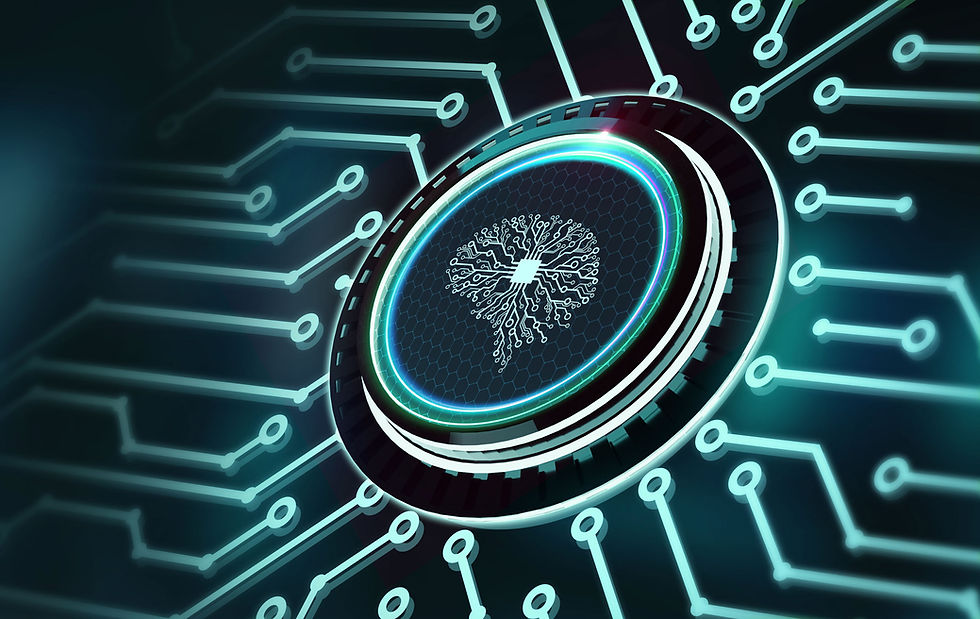The good and the bad of Artificial Intelligence and elections
- Sebastian Griffin
- Feb 6, 2024
- 3 min read

As with most technological innovations, there are always pluses and minuses to account for. The same is true with Artificial Intelligence (AI) when it comes to our election process. On the one hand, several states are experiencing efficiency gains by using AI to help with signature verification on ballots and petitions. On the other hand, states are currently ill-equipped to deal with the problems caused by “deep fakes” in election advertisements.
First, let's look at the potential beneficial use of AI in our electoral process.
The United States uses various methods for absentee/mail voter verification. The most common approach is signature verification, where voters sign an affidavit on the ballot envelope, and election officials compare it with the signature on file in the voter registration record.
As AI has gained unprecedented momentum, certain states have explored alternative methods for more digital and automated verification processes in the context of absentee/mail voting. Signature verification is conducted in 31 states, including Idaho, Washington, and Montana. According to the National Conference of State Legislatures:
“Unlike the traditional experience of voting at a physical polling place under the supervision of election officials or volunteer election workers, marking an absentee/mail ballot occurs in an unsupervised environment, usually at the voter’s home. Because the voter does not appear in person, election officials use other ways of verifying that the absentee/mail ballot they receive does come from the intended eligible voter.”
Advocates stress the importance of implementing robust measures to ensure the legitimacy of votes, including support for voter identification requirements. Security concerns regarding mail-in voting are commonly voiced, focusing on potentially fraudulent activities such as ballot harvesting or interception. Calls for enhanced security protocols and verification measures are common in discussions around mail-in voting.
Instead of relying solely on traditional manual methods like signature verification, several states are leveraging AI to enhance the accuracy and efficiency of the verification process.
The incorporation of AI in voter verification aims to streamline and expedite the authentication of absentee/mail ballots. This may involve the development of AI algorithms capable of analyzing signatures or other identifying features with a high degree of precision. Automated systems can quickly compare and match signatures, reducing the reliance on manual labor and potentially expediting the election process.
The move towards more digital, AI-driven verification is likely driven by a desire to leverage technological advancements to enhance the security and integrity of the voting process. However, the specific details of how each state implements and integrates AI into its verification processes may vary, reflecting the diverse approaches taken by different jurisdictions to modernize and secure their electoral systems.
As of 2020, at least 29 counties in eight states – California, Colorado, Florida, Hawaii, Oregon, Nevada, Utah, and Washington – use AI systems to enforce signature matching rules on absentee/mail-in ballots.
While this is an intriguing development, if a state is going to use AI for signature verification there should be a requirement for human eyes to review any flagged ballots.
Now for the problem of AI and “deep fakes” in election advertising.
States across the country including Idaho, Wyoming, and Washington are beginning to address a major concern for a modern-day form of piracy; deep fakes.
The proposed legislation in Idaho (HB 391) and surrounding states aims to address the growing threat of artificial intelligence-generated deep fakes in electioneering. The bill, introduced with bipartisan support, allows political candidates to seek legal remedies if their recorded speech, photos, or videos are manipulated using AI or digital technology to create a false narrative that differs significantly from reality. Candidates can pursue injunctive relief to prevent the publication of such materials and seek damages.
As illustrated by the signature verification efforts and the fight against deep fakes in political advertisements, AI is neither good nor bad but is a tool that can be used for great benefit or harm. It is important to keep strong human oversight of its use in our election system.







Comments